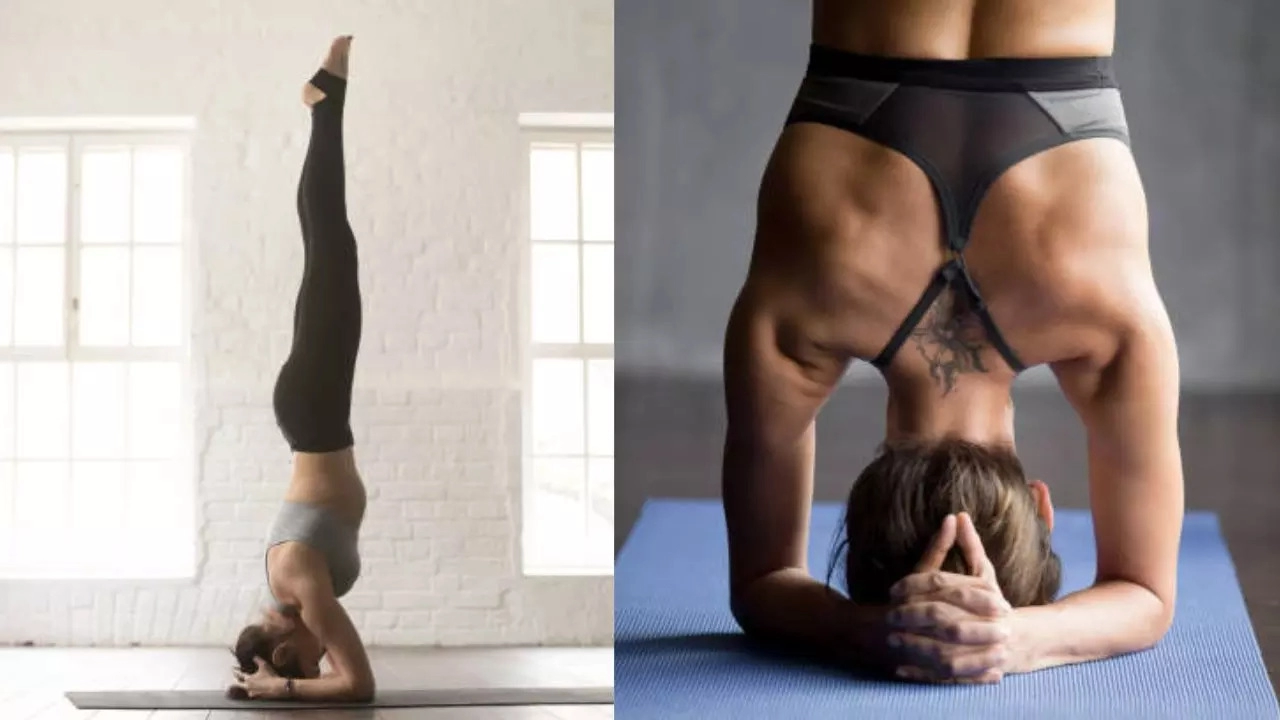News
What Happens To Your Body When You Do Headstands For Too Long?

According to yoga practitioners, many people do not keep safety measures in mind while practicing headstands, leading to many life-threatening results
While yoga is a preferred way of working out for many people across the world, one of the most popular asanas is a headstand – an advanced inversion that involves turning your body upside down. While it has immense health benefits, which include alleviating stress and depression, strengthening the upper body, enhancing lung capacity, and boosting digestion, it is important to know how to do it properly.
According to yoga practitioners, many people do not keep safety measures in mind, leading to many life-threatening results.
What happens when you hold a headstand for too long?
And so, it is important to understand that this position, however beneficial, may come with its own risk factors. Headstands should include a time that makes you comfortably steady without any excess effort in the posture. And so, if your arms, back, or neck begin to get tired during a headstand, you must just stop at that moment and come out of the pose. According to experts, with practice, you may be able to hold the pose longer in a steady manner.
Beginners should start by holding headstands for 10-15 seconds and then gradually progress to one to two minutes.
What positions should you avoid?
As goes with every workout, it is always important to listen to your body and avoid pushing past discomfort. However, to have good progress in your headstand journey, it is important to have a strong neck with some isometric holds and light resistance work. For that, a few exercises that can help improve your neck strength and make your headstands more controlled include:
- Pressing your forehead against your palms for at least 10-15 seconds
- Lying on your back, bridge up, and supporting yourself on your feet and head
- Wrapping a resistance band around your head and anchoring it in front or behind
- Sitting or standing upright, gently tucking your chin to your chest
- Use a wall for the erect stand, which can work as emotional support as well.
When should you avoid doing headstands?
Avoid doing headstands if you have:
- Neck, shoulder, or back concerns
- Concerns with blood coming to your head
- Osteoporosis
- A heart condition
- Frequent high or low blood pressure
- Eye concerns, including glaucoma
Get Latest News Live on Times Now along with Breaking News and Top Headlines from Fitness, Health and around the world.
Our Blogs
Our Recent News

Deadly Listeria Outbreak Linked To Ready-To-Eat Meats: California Infant Dies, 10 Others Sick
Deadly Listeria Outbreak Linked To Ready-To-Eat Meats: California Infant Dies, 10 Others Sick (Image...

Are You Drinking Poison? Toxic Chemical Found In The US Tap Water Affecting Millions
Are You Drinking Poison? Toxic Chemical Found In Us Tap Water Affecting Millions (Image Credits: iSt...

Friends Share More Than Secrets—They Share Gut Microbes, Says Yale Study
Friends Share More Than Secrets—They Share Gut Microbes, Says Yale Study (Image Credits: iStock) Fri...

